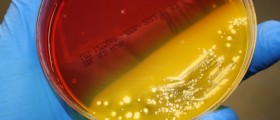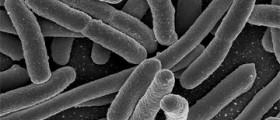
Introduction
There are a large number of people who do not know that salmonella is actually a certain type of bacterium which can be found in the intestines of most types of mammals, reptiles and birds. Different types of foods, mainly of animal origin, are known for being the main agents in spreading the bacterium to humans. The medical condition associated with this type of bacterium is called salmonellosis and it is characterized by a group of symptoms which include abdominal cramps, diarrhea and fever. Persons who suffer from weakened immune sysyems and poor underlying health are especially at risk, because salmonella may even invade their bloodstreams and trigger certain types of medical conditions which tend to be fatal.
Salmonella
Salmonella is among the most common intestinal infections in the United States. It is estimated by certain sources that there are more than 1 million cases of salmonellosis each year. Out of all those cases, there are almost 400 deaths triggered by this dreadful bacterium. Salmonella infections commonly occur when a human consumes any type of food which is contaminated with the feces that carry the harmful bacteria. Poultry, meat and eggs are the food sources which are usually associated with the outbreaks of salmonella, especially when they are in their raw form or when they are undercooked. Contaminated water may also trigger the infection. There are two main different types of salmonella and those are typhoidal salmonella and non-typhoidal salmonella. Typhodial salmonella got its name because of its tendency to cause another medical condition known as typhoid fever. This medical condition is rather rare and it is triggered by the bacterium known as Salmonella Typhi. Non-typhoidal salmonella is much more common. The most frequent serotypes of salmonella such as salmonella enteriditis or salmonella javiana are usually the ones which trigger this type of infection.
Symptoms
Symptoms of salmonellosis may vary greatly from person to person, and in some cases a person does not experience any symptoms at all. Fever, abdominal cramps and diarrhea are the most common ones of them all, as they usually occur in most cases of salmonella infection. Once a person consumes contaminated food or water, the symptoms usually start kicking in after 6 to 72 hours. If the condition does not get treated the symptoms may last for up to 7 days in some cases. Some cases of salmonella infection may also involve certain additional symptoms such as body aches, headaches, vomiting and a bloody diarrhea. The aforementioned typhoid fever usually kicks in approximately one week after the consumption of contaminated foods and it can last up to two months in some cases. This is a very serious medical condition which may sometimes even be fatal and it is commonly characterized by symptoms such as enlarged organs, delirium, nosebleeds, coughing, painful sensations in the abdomen, lethargy, weakness and high fever.
Complication, treatment and prevention of salmonella
There are several different types of salmonella complications and they usually occur in infants and older persons. Focal infection is one of the common complications and it involves the rooting of the bacteria and the body tissues which leads to the development of medical conditions such as endocartitis and arthritis. Another complication is reactive arthritis, characterized by inflammatory conditions of urinary organs, reproductive organs, eyes and the joints. In most cases, salmonellosis does not require any specific treatment plan. Some cases may involve the use of antibiotics. In order to prevent the salmonellosis in the first place one must always wash the hands thoroughly before preparing any type of food. Undercooked and raw foods need to be avoided as much as possible.
Magnitude of salmonella outbreaks
The term foodborne illness is the one used for all illnesses which are triggered by the consumption of food items contaminated by a bacterium or virus. This type of illness may affect any group of people, related or non-related. In most cases the outbreaks of such illnesses are triggered by a combination of certain unfortunate events. When the food is not stored properly, the bacteria are allowed to multiply to rather high number. The problem with insufficiently cooked food is that such processes may not be enough to kill all the harmful bacteria. Salmonella outbreaks can be local, when a certain group of individuals realize that after having a common meal, all of the members got ill. This usually happens in restaurants. Outbreaks of salmonella may also be widespread, and is a much bigger problem than the local outbreaks, mainly due to the fact that it is usually rather hard to trace the source of the outbreak. There was an outbreak of salmonellosis in Minnesota in which the source of the outbreak were cereal products produced in a factory, but the main problem was that they were all marketed under various brand names in numerous different states. Since the market for the products was fairly big, it was rather hard to connect all the individual cases all across the country to the same source.

















Your thoughts on this
Loading...